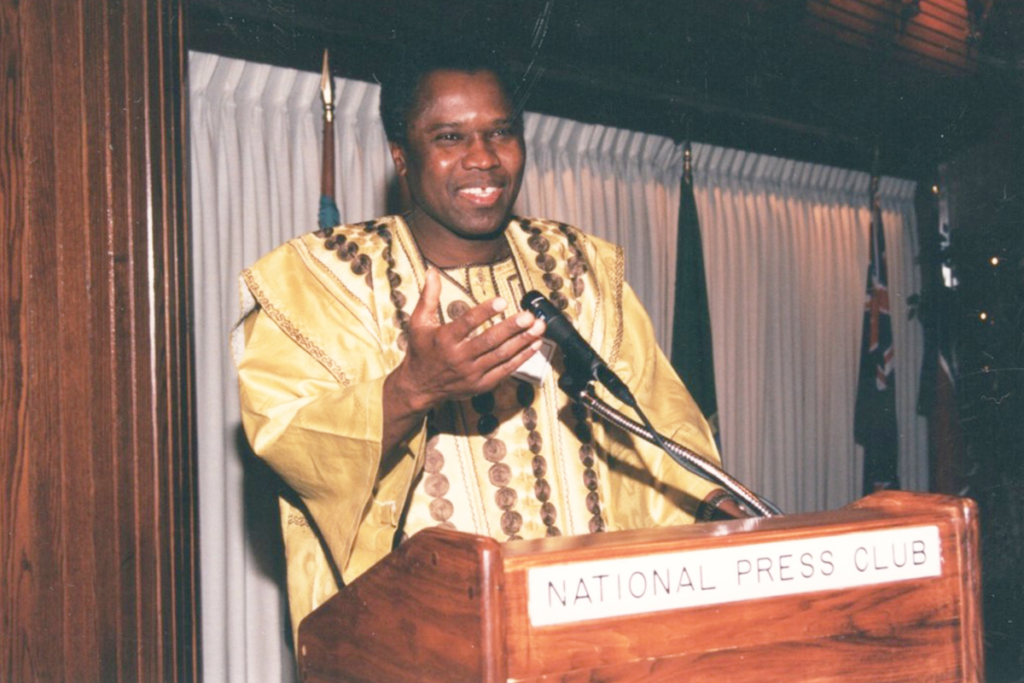Known around the world, Prof. Peter Lamptey is a global health champion in any light. Many of you may know him from his early involvement in the global HIV response or from his fight to raise public awareness of noncommunicable diseases (NCDs). I first heard Prof. Lamptey speak about the role of laboratory science in the NCD response at a conference plenary hosted by the African Society for Laboratory Medicine, my former employer. A compelling talk for sure, but notably his plenary was also my first significant introduction to FHI 360’s research.
Responding early to HIV
The beginning days of the global HIV response are often remembered for inaction. Researchers, however, have always been at the forefront of the fight to improve access to HIV prevention and treatment programs. Prof. Lamptey has been an early responder in this fight, particularly in developing contexts. Thus, the first publication I have chosen to highlight is a clinical review that focuses on reducing heterosexual HIV transmission in resource-limited settings.
Published at the beginning of 2002, when access to lifesaving medicines was limited and nearly 14,000 people were infected with HIV each day (compared to fewer than 5,000 infections each day now), the review paints a devastating picture. Using findings from the current literature and his own experiences implementing HIV programs for FHI 360 across 60 countries, Prof. Lamptey lays out the health, economic, and social impact of the epidemic, as well as the factors influencing heterosexual transmission and successes in combatting additional infections.
Significant to me is the review’s focus on decreasing vulnerability for high-risk groups – what we now call key populations (e.g., sex workers) – and emphasis on lowering viral loads as a form of HIV prevention. Both of these prevention approaches are top priorities of the modern response to the HIV epidemic. There is also a noteworthy willingness in the review to call out the international community’s lack of commitment (and funding) to address HIV in developing contexts.
Applying lessons from HIV to NCDs
For my second highlight: picture it, New York City, 2011, just days before the upcoming UN High-Level Meeting on NCDs. Together with leading voices from LSHTM, Duke University, and the Public Health Foundation of India, Prof. Lamptey releases a paper advocating for the international community to apply the lessons from the global HIV response to the coming wave of NCDs.
The authors suggest both the strengths and weaknesses from the HIV response should shape an evidence-based global NCD response. Key recommendations laid out in the paper include: mirroring the HIV response’s resource mobilization and advocacy efforts; encouraging local (national and community) leaders, especially policymakers, to prioritize country-specific NCD responses; and strengthening health systems and infrastructure. Other lessons for tackling NCDs include avoiding creation of the siloed, vertical programs often associated with the HIV response and urging an integrated, multisectoral approach to program implementation – a hallmark of today’s humanitarian response.
Addressing NCDs
Now jump to 2017. The World Health Organization confirms NCDs will surpass infectious diseases as the most common cause of death in Africa within about a decade. It then seems natural for my third highlight to be a recently published paper that lays the groundwork for evaluating a hypertension improvement program in Ghana. The paper is also included in this audio feature from FHI 360’s Chief Science Officer, Dr. Timothy Mastro.
This paper from Prof. Lamptey and his co-authors is part of a broader two-year project to implement and evaluate a community-based hypertension treatment and control program. The evaluation applies a quasi-experimental design consisting of cross-sectional surveys (a baseline/endline in the intervention and control districts) and a cohort study (current being implemented in the intervention district). The co-authors present findings from the baseline cross-sectional survey, and the results are intriguing.
The baseline findings show that not only is there a high-burden of hypertension in Ghana (32.4%) – which was expected – but that people are aware of their condition (46.2%). This high-level of awareness was not expected since previous studies suggest the majority of people with hypertension are unaware of their condition. Despite this awareness, the paper finds an “alarmingly” low-level of hypertension treatment (9%) and hypertension control (1.3%). To improve the management of hypertension, the paper emphasizes it is critical to identify where “bottlenecks” to the treatment and control of hypertension exist.
Stay tuned for what comes next. The community-based program will now be implemented based on a public-private partnership model and follow three steps: implementation, impact evaluation, and a cost-effectiveness evaluation. Implementation of the intervention is underway and the baseline is scheduled to be completed this year.
“A global wise man”
After knowing Prof. Lamptey’s work over the years, I was thankful to have been able to attend his recent retirement lecture at FHI 360. I think the way Dr. Mastro introduced Prof. Lamptey as “a global wise man” that day sums it up best.
Photo credit: FHI 360/Lamptey



